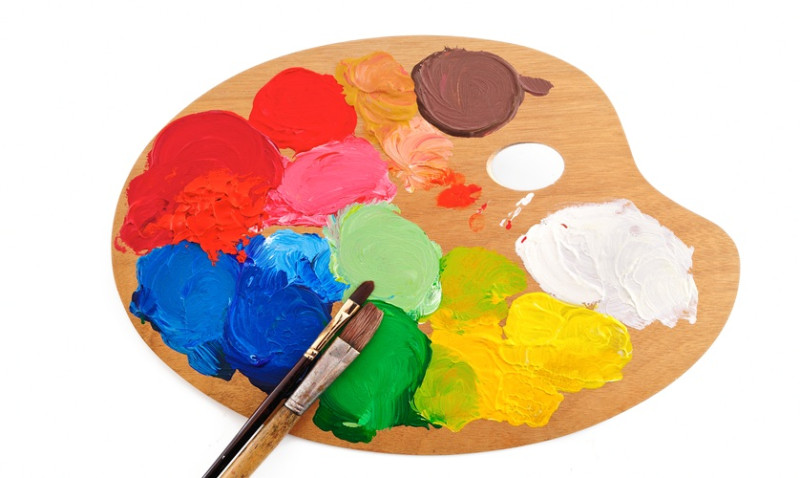
Selling your art online can be an exciting and profitable venture, especially in today's digital-first world. Whether you're a professional artist, a passionate hobbyist, or a creative designer, there's a growing market for unique, hand-crafted, and visually striking artwork across the UK. With the right strategy, you can transform your passion into a sustainable income stream. This guide will walk you through key tips and proven methods to help you successfully sell your art online, specifically tailored for DIY enthusiasts, young professionals decorating their homes, architects, interior designers, and tradespeople.
1. Understand Your Target Audience
Before you start selling, it's important to understand who you're creating for. Are you designing contemporary art pieces for young professionals looking to elevate their flat’s aesthetic? Or are you producing architectural prints that align with modern home designs and renovations?
Each group has different tastes and needs. DIY enthusiasts might prefer vibrant, upcycled or sustainable pieces that add character to a space. Architects and designers usually look for minimalistic, impactful artworks that complement their interior concepts. By understanding their preferences, you can focus your efforts on creating and promoting the right kind of art.
Conduct some research by browsing popular online marketplaces and social media platforms. Look at what’s trending, what buyers are commenting on, and what similar artists are successfully selling. Building a profile of your ideal customer will help sharpen your marketing messaging and increase conversions.
Tailoring your product descriptions, pricing, and overall presentation to suit your audience's budget and design goals will immediately set you ahead of generic listings online.
2. Choose the Right Platform to Sell
Not all online platforms are created equal when it comes to selling art. The best platform for you depends on your audience and the type of artwork you offer. Here are some of the most popular platforms used by UK artists:
| Platform | Best For | Pros | Cons |
|---|---|---|---|
| Etsy | DIY art, crafts, home decor | High traffic, supportive community, good for handmade items | High competition, fees on listings and transactions |
| Shopify | Professional artists with their own brand | Full ownership, brand customisation | Monthly fees, requires marketing knowledge |
| Saatchi Art | Fine art and limited editions | Global exposure, helps with shipping and logistics | Commission fees up to 35% |
| Not On The High Street (UK) | Unique UK gifts and wall prints | Targeted UK customer base, curated platform | Application-only, limited control over storefront |
You can even consider listing your art on multiple platforms initially, to see where you gain traction. Over time, you may want to consolidate into one or two that deliver consistent results.
3. Present Your Art Professionally
A picture is worth a thousand words—especially when selling artwork online. Your images must be high resolution, well-lit, and staged in real-life settings when possible. Consider investing in a DSLR camera or hiring a local photographer to capture your pieces in the best possible light.
Young professionals and designers want to see how your art fits within modern interiors. Displaying your artwork in mockup environments that feature on-trend furniture and colour palettes can help potential buyers visualise it in their own space.
In addition to great photos, your product descriptions should be thorough and SEO optimised. Include the medium, dimensions, mounting options, and inspiration behind the piece. Use keywords that your audience may search for, such as “modern abstract wall art” or “Scandi-style framed prints." This improves your visibility on search engines and within marketplace searches.
Consistency across your branding, from your logo to packaging, builds trust and distinguishes you from hobby sellers.
4. Price Your Artwork Competitively
Pricing is a delicate balance between what your art is worth and what your audience is willing to pay. Too high, and buyers may shy away. Too low, and your work may appear undervalued or mass-produced.
Start by assessing your material costs, time spent on each piece, overheads (including commissions or marketplace fees), and the perceived value based on similar offerings. For young professionals or designers looking to decorate within a budget, consider offering different price points – for example, small prints, limited-edition giclées, or downloadable digital art.
Don't be afraid to charge what your work is worth—but ensure your pricing is justified by your presentation, quality, and service. Having a pricing tier also makes it easier to cater to a broader range of customers without diluting your brand.
5. Offer Custom and Commissioned Work
Many homeowners, designers, and architects are on the lookout for custom pieces that match a room’s theme, colour palette, or architectural intent. Offering custom artwork opens up an exciting and profitable avenue of sales.
Highlight your willingness to take commissions on your storefront or social media. Offer clear guidelines on how the process works—from consultations and pricing estimates to timelines and the revision policy.
You can even provide package options such as “Custom Portrait from Photo,” “Abstract Mural for Commercial Space,” or “Personalised House Illustration.” These unique offerings set you apart and attract more serious, invested buyers.
This also builds word-of-mouth marketing when clients proudly share the story behind their bespoke artwork with friends, guests, or clients—introducing your work to new networks organically.
6. Promote Your Art with Strategic Marketing
Creating art is just one part of the equation—marketing it effectively is what drives traffic and sales. Social media platforms like Instagram, Pinterest, and Facebook remain invaluable tools for visual artists. Post regularly and use relevant local and niche hashtags such as #UKArt, #InteriorDesignUK, or #ModernWallArt.
Another powerful strategy is collaborating with UK interior designers, DIY influencers, and architects to feature your artwork in their content. Even small influencers can have deeply engaged audiences who trust their recommendations.
Email marketing is another channel often overlooked. Build a simple newsletter using platforms like Mailchimp to inform past customers and subscribers about new collections, events, or exclusive offers.
If you have the budget, paid ads—especially on Instagram and Google Shopping—can help you target very specific audiences, from first-time homeowners to professionals renovating offices or cafés across cities like London, Manchester, or Birmingham.
7. Offer Excellent Customer Service
Buying art online can be a big decision for many people. Providing excellent customer service helps build trust and encourage positive reviews and referrals. Always respond quickly to messages or commission inquiries and keep buyers informed throughout the shipping process.
Simplify your return and refund policy and make it available on your listing or website. While art is subjective, a customer-friendly return policy can alleviate purchase hesitations.
It’s also worth investing in high-quality, secure, and branded packaging. Adding thank-you cards, care instructions, or even a discount code for their next purchase helps create a memorable unboxing experience and increases the chance of repeat business.
Finally, encourage feedback and display testimonials. Happy customers act as social proof for your quality and service, boosting confidence in potential buyers who've found you for the first time.
Start Small, Think Big
Whether you’re just dipping your toe into online art sales or looking to scale up your creative side hustle into a full-time business, the opportunities are there. The UK is filled with art lovers, creative professionals, and design-savvy homeowners looking to add meaningful and beautiful pieces to their spaces.
By taking a strategic, audience-focused approach and treating your art like a business, you can find sustainable success while doing what you love.
Start small, test your market, nurture your community, and over time, your art will find its way into homes, offices, shops, and studios all over the country.





